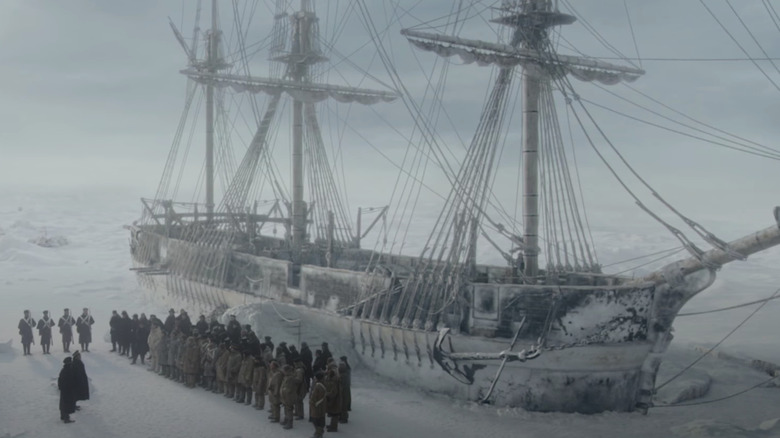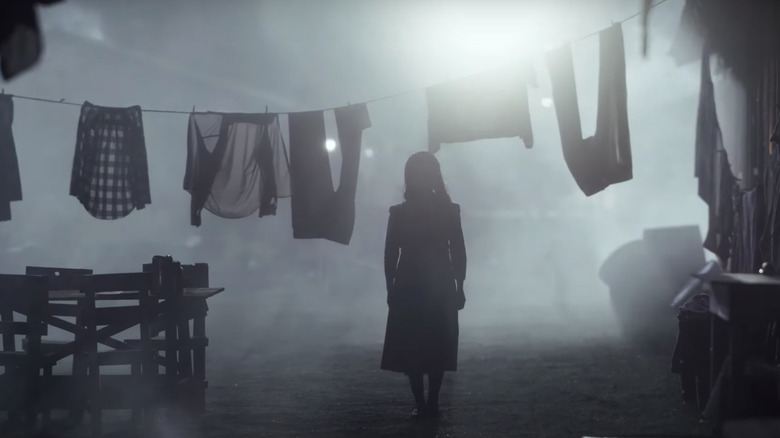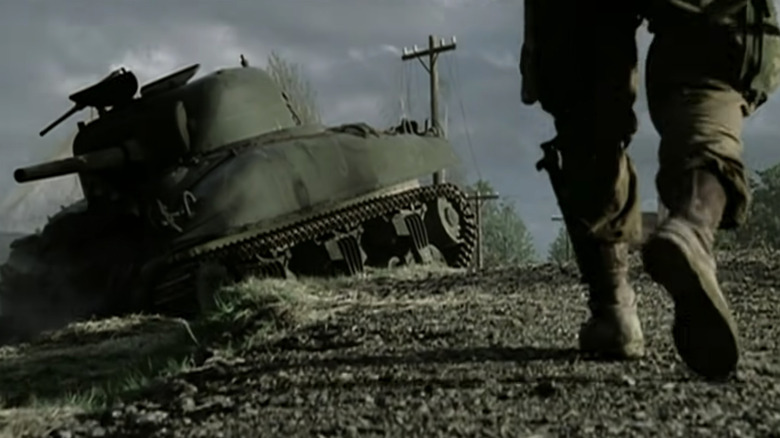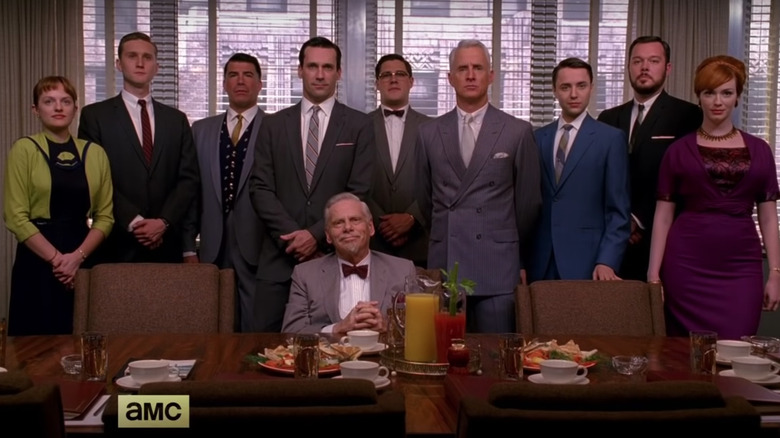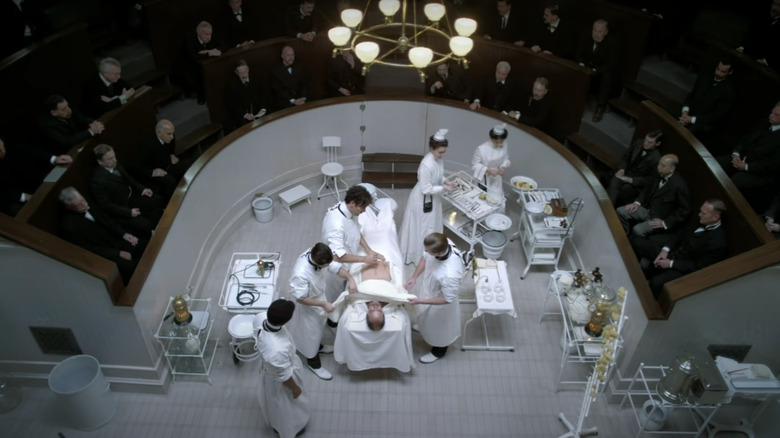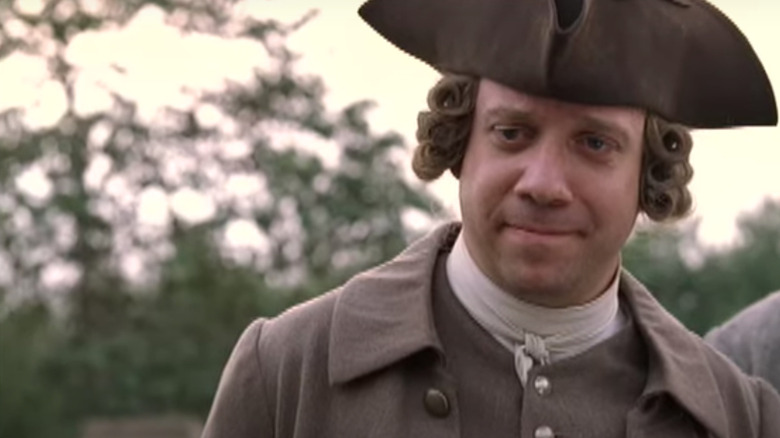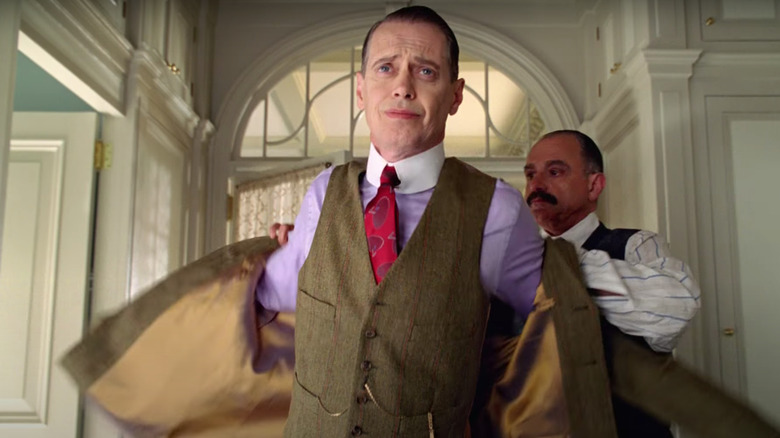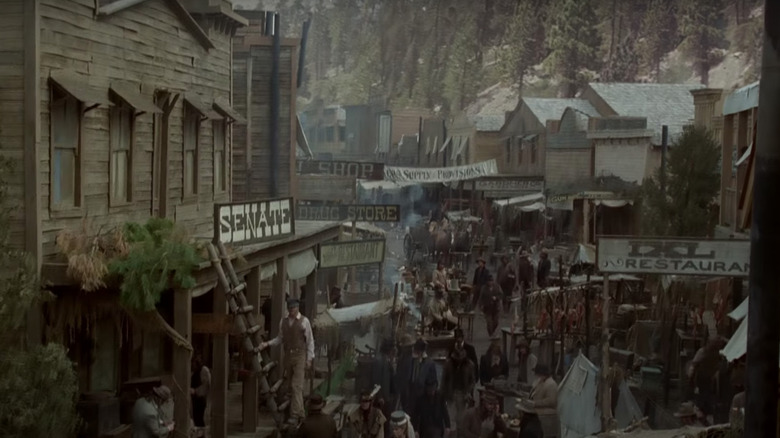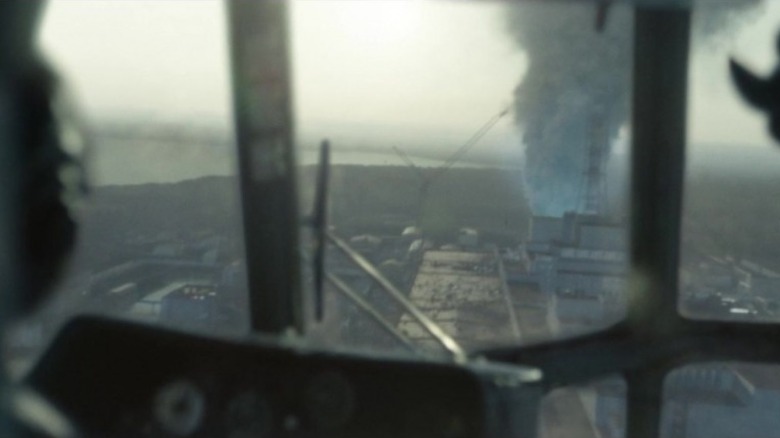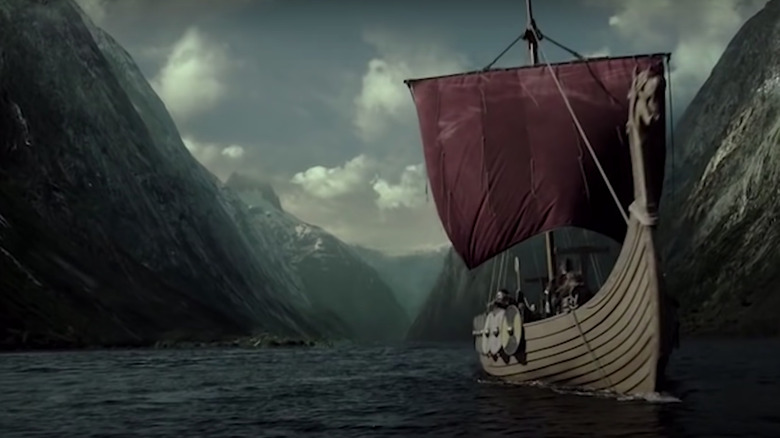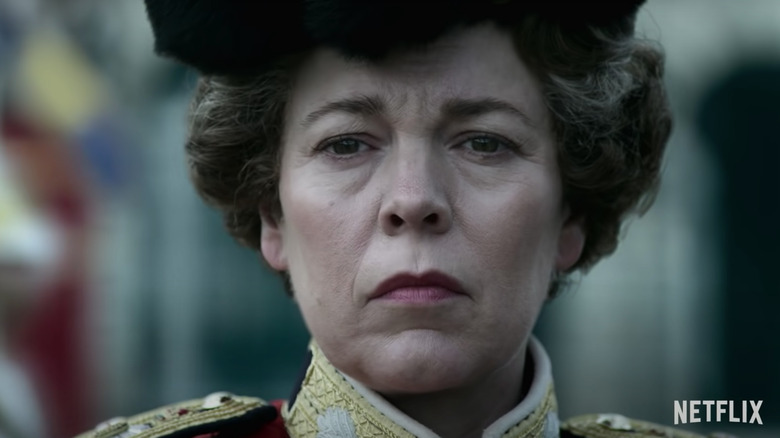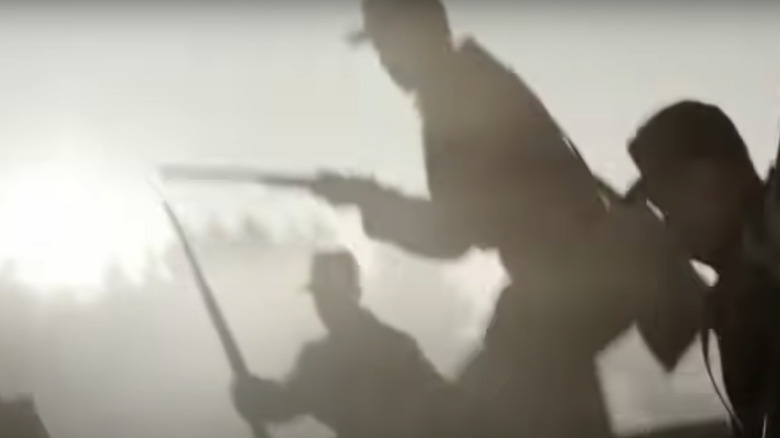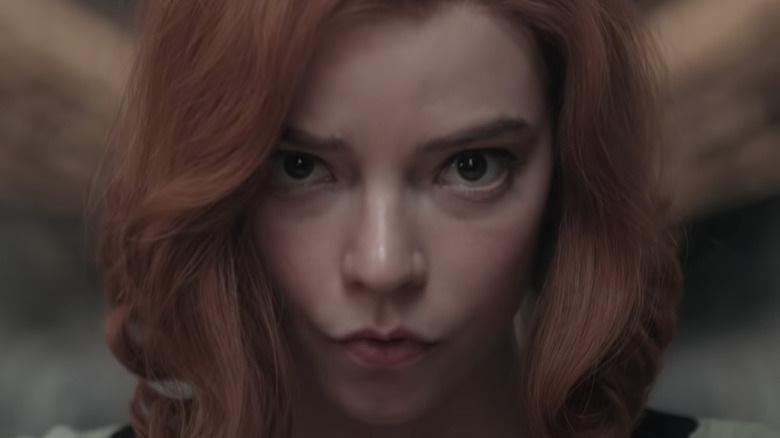The Most Historically Accurate TV Shows Ever
Whether it's the myth that Viking raiders wore horned helmets or the belief that the American frontier looked like "the Wild West" as depicted in Spaghetti Westerns, popular culture has changed the way many imagine the past. As discussed in Katherine Anne Donahue's "Fact Through Fiction: A Case Study of Televised Historical Drama's Influence on Audiences' Perceptions of the Past," many individuals gain most of their information about history from television and films set in the past. There is no guarantee that any particular drama is factually accurate – whether that is because of a lack of research or budget to accurately depict the past, or because of intentional changes that benefit the plot or attempt to make the characters more relatable to modern audiences.
There is much debate over whether or not historical fiction has a responsibility to depict history accurately or if telling a good story is more important, as Stephanie Merritt discussed in The Guardian. Different productions have different approaches to this problem. Some TV series choose to create highly realistic sets and costumes which accurately show how the past would have looked, while having their stories centered around invented characters and events. Others tell fictionalized versions of true stories, with real historical figures as their characters.
The following series use different techniques to tell stories set throughout history. These are the most historically accurate TV shows ever.
The Terror
"The Terror" is a horror series with fantasy elements, inspired by real historical events. The first season was inspired by the true story of the 1840s Franklin Expedition into the Arctic and the disappearance of their ships the HMS Terror and the HMS Erebus. The second season takes place in the United States internment camps for Japanese-American citizens during World War II. While both seasons include supernatural entities, the historical settings are highly accurate.
As described by Newsweek, the first season of "The Terror" is remarkably faithful to the true story of the Franklin Expedition. The characters, including protagonist Francis Crozier, were real people, and, as the series depicts, they did go out in search of a "Northwest Passage," or a way of sailing from the Atlantic to the Pacific through the Arctic. The series used the information discovered in various archeological investigations into the fate of the crew to develop the survival horror elements of the story – including scurvy, lead poisoning, and cannibalism.
Historically accurate replica ships were built for the crew to film on for season one. As detailed by executive producer Alexander Woo, for season two, an entire recreation of an internment camp was built, complete with watchtowers and barbed wire fencing. Like season one, the second season features a supernatural entity, but much of the series's horror comes from the historically accurate and devastating treatment of Japanese-Americans who were forced into these camps.
Band of Brothers
"Band of Brothers" takes place in 1944, depicting a group of American soldiers during World War II. As stated by The Guardian, it is based on a nonfiction book by historian Stephen E. Ambrose made up entirely of interviews with a single regiment. These firsthand accounts were used to write the show.
The series included massive crowd shots filmed in the actual historical locations. As detailed by Smithsonian Magazine, the series emphasized creating a realistic depiction of the combat that these soldiers went through. At the time of its filming, it was the most expensive production of its kind, due to producers Tom Hanks and Steven Spielberg's commitment to historical accuracy. The production attempted to have the actors in the correct military uniforms and carry the right weapons for the time.
Each episode began with interviews with actual soldiers in which they recounted their experiences in the battles depicted in the show. The cast got to know the soldiers and their families. Actor Michael Cudlitz explained that talking to the actual people involved was critical: "That was the point behind the whole project: We wanted to get everything right."
Mad Men
"Mad Men" takes place at a 1960s ad agency in Manhattan, and includes flashbacks to the protagonist's childhood during the Great Depression and time in the military during the Korean War. As noted by Time, creator Matthew Weiner was fastidious about getting the historical details of the show right. Everything from ensuring that every document seen on camera was typed with a period-appropriate typewriter to ensuring the fruit (which has been specially grown to be larger over time) looked like it came from a 1960s supermarket.
While the show's characters are fictional, the things that they do and experience are highly realistic. One of the major ongoing themes in the series is the era's sexism and the changing role of women. "Mad Men's" female characters depict different ways that women responded to these challenges. Whether it's frustrated homemaker Betty Draper realizing she doesn't really know her husband, pragmatic beauty Joan Holloway using her sexuality to survive in a male-dominated office, or ambitious Peggy Olson going from secretary to copywriter, their stories are fictional, but representative of true experiences of actual '60s women.
The series also included references to many historical events, from Civil Rights to Marilyn Monroe's death. These events are seen through the eyes of the characters, giving the viewer an idea of what it would have been like to live through them. For example, the Kennedy assassination ruins the mood at a wedding by taking attention from the bride, while the moon landing is overshadowed by a beloved character's death.
The Knick
"The Knick" is set in New York City in the early 1900s and deals with the development of modern medicine. As noted by Bustle, the series changes some minor elements of history to suit its narratives, such as the location of the hospital (which was actually located at Covent Avenue and 131st Street rather than in Greenwich Village) and its name (the hospital wasn't named "The Knickerbocker" until 13 years after the first season is set) but in general, the show is unflinchingly historically accurate. In particular, the series's depictions of the era's grisly medical procedures are very real – too real for some viewers.
The show's protagonist is fictional but inspired by William Halsted, who is credited with performing the first emergency blood transfusion in the United States. As described in the New York Times, actors were taught how to use scalpels, tie sutures, and other medical knowledge in order to make the surgery sequences more accurate. The majority of the production's medical procedures are recreations of "vintage procedures" including the first episode's gory opening, which depicts an emergency cesarean section, featuring archaic instruments. The show's portrayal of 1900s medicine may be too brutal for some viewers, but that's actually what the creators were hoping for. As explained by executive producer Steven Soderbergh, "I was hoping maybe half the people would look away."
John Adams
The miniseries "John Adams" is an adaptation of historian David McCullough's biography of the American president. The series focuses on the personal life of John Adams and emphasizes how difficult life in the 1700s was. McCullough stated (via the Boston Globe): "I don't think any film has been done with such authenticity."
"The series really helps viewers appreciate the grittiness and difficulty of daily living in the late 18th century," explained Saint Joseph's University professor Dr. Jeffrey Hyson. Far from glamorizing the past, it depicts the unsanitary conditions both in the rural and urban settings in 1700s America, including grisly amputations and other medical procedures.
As director Tom Hooper explained to NPR, one of the goals of the series was to show viewers how uncertain the time Adams lived in was and to provide some understanding of what it would be like to actually live through the American Revolution. Often "Founding Fathers" are depicted in a way that is larger than life, with the knowledge of how influential they would become, but "John Adams" tried to keep the introduction of major historical figures such as George Washington "low-key," to show that it was unknown "who the heroes were ... going to be."
Boardwalk Empire
"Boardwalk Empire" is a story about the organized crime that took over the sale and distribution of alcohol during Prohibition in the 1920s, and how they forged deals with U.S. politicians to stay in business. It was inspired by Nelson Johnson's nonfiction book "Boardwalk Empire," and its protagonist, Enoch Thompson, is a fictionalized version of Enoch Johnson, a New Jersey crime boss who was also the sheriff of Atlantic City.
Thomson wasn't the only historical figure from the era featured in "Boardwalk Empire." As described in Time, the series included other famous gangsters, like "Scarface" Al Capone who would go on to run Chicago, Meyer Lanksy of the National Crime Syndicate, and Arnold Rothstein, the NYC gangster who famously fixed the World Series.
The series was designed to look as historically accurate as possible. As described by series production designer Bob Shaw. Along with the show's creator, Terence Winter, Shaw designed a full-size set of the 1920s Atlantic City Boardwalk. First, it was designed as a model. Then, in just three months, the real thing was built. The shots on the Boardwalk were supplemented with VFX, including tall buildings and the view of the ocean. Extensive research was done to make the buildings look as real as possible, and to ensure the businesses on the boardwalk were accurate to what would have really been there.
Deadwood
The "Deadwood" TV series and the film that followed were inspired by events that actually took place in the town of Deadwood, South Dakota in the late 1800s. As depicted in the series, Deadwood was a gold rush town that many of the most famous figures of the Old West passed through – and the site of the murder of Wild Bill Hickok.
As stated in the New York Times, most of the research that went into the series came from the museums in modern-day Deadwood. A full-time researcher had to be hired by the museums to investigate everything from what Deadwood's Chinatown would've looked like in the 19th century to how much its saloons would've charged for a drink. Their researcher became such an expert that he ended up writing a nonfiction book about Al Swearengen. Deadwood's Production designer Maria Caso explained, "We really wanted to recreate as many details as we could, just so it's true to history."
While the stories in the individual episodes are fictional, and the conversations between the characters are imagined, many elements are true. As described in Smithsonian Magazine, many of the show's main characters, including Seth Bullock, Al Swearingen, and Calamity Jane, were actual people. The show was famous for the unique heightened language used in the dialogue, which was also an invention of the writers. The show's penchant for constant cursing, however, is probably realistic.
Chernobyl
"Chernobyl" tells the story of the famous 1986 nuclear disaster. After the explosion at the power plant, an entire city had to evacuate due to radiation. While it is known that at least 30 people died from radiation, many details about exactly what happened are unknown. As writer and executive producer Craig Mazin told Variety, the show attempted to be different than typical disaster shows, and focused on what the experience would have been like for individuals who were there.
While journalist Masha Green criticized the show's depiction of how people in the Soviet Union would have behaved, he also praised the show's visuals, stating, "the material culture of the Soviet Union is reproduced with an accuracy that has never before been seen in Western television or film—or, for that matter, in Russian television or film. Clothes, objects, and light itself seem to come straight out of 1980s Ukraine, Belarus, and Moscow."
One of the major challenges in researching the story of Chernobyl was that it took place in the Soviet Union, and a lot of information about the event was covered up at the time. The accounts that are available are often contradictory, forcing the production to make decisions about which to believe were most accurate. "I tended to default to accounts that were less dramatic," Mazin told BAFTA Guru, "in telling a story like Chernobyl you never want to feel like you are helping the drama ... the tragedy is tragic enough."
Vikings
"Vikings" is set in a fictionalized version of the Viking Age. Michael Hirst, the show's creator, described it as "a drama, not a documentary," but the show does depict genuine historical events, like the Viking raid of Lindisfarne. One episode depicts sacrifices at the temple of Uppsala, in which animals and human beings were said to be sacrificed to the gods. Many of the characters that the show depicts, like protagonist Ragnar Lothrok, were actual historical figures. Many of the show's storylines are derived from myths and legends about their lives.
"In the close details of it, the writers have paid a lot of attention to current research," archeologist and Viking expert Neil Price told Penguin Books, "The idea of the Viking Age on the Vikings' terms – that's something that series is really, really good at."
The show's fashion often appears modern, but it actually may be closer to what Vikings really wore than one might expect. Costume designer Joan Bergin examined what actual pieces of clothing and jewelry have survived from the Viking Age, determined what materials they could have used, and then took "a leap of faith" and designed looks she found visually interesting.
The Crown
"The Crown" follows the reign of Queen Elizabeth II, with multiple actors and actresses playing the royal family, politicians, and other figures in the queen's life from 1947 to the 90s. Series creator Peter Morgan has clarified that "The Crown" is a combination of historical research and invention. "'The Crown' is a blend of fact and fiction, inspired by true events," stated royal historian Carolyn Harris (quoted via Parade.)
However, it worked to get a lot of things right. At the time of its release, it was the most expensive TV show ever made, and a massive part of its budget was dedicated to recreating historical costumes and building a full-sized set of Buckingham Palace. "The designers have managed to accurately recreate specific garments that are quintessential to the telling of the royal family's sartorial narrative," fashion historian Raissa Bretaña told Glamour. She went on to explain how the show went beyond basic recreation to create wardrobes for each character that tell a story while remaining historically accurate.
While The Crown's plot points are based on actual historical events, and the show's look is highly authentic, individual scenes and dialogue had to be invented by the show's writers. According to Robert Lacey, the show's historical consultant, that doesn't take away from the accuracy of The Crown's depictions of the royal family. "There are two sorts of truth," Lacey told Town & Country "There's historical truth and then there's the larger truth about the past."
Hatfields & McCoys
"Hatfields & McCoys" is based on a generations-long feud between two families just after the American Civil War. The feud escalated to violent conflict, intensified by the arrival of industrialization. As stated in a review from The Guardian, the major plot points of the series are inspired by events that actually happened during the feud, from pig theft to murder. The story of the Hatfields and McCoys is an American legend as well as a historical event – and the series depicts both.
"It was a lot of research that went into Hatfields & McCoys, having period pieces from 1861-1898," series costume designer Karri Hutchinson told interviewers on the Creative Emmys red carpet, "There was some actual reference photos that we could go through ... it was an extensive process."
Historian Altina Waller, who wrote the nonfiction book, "Feud: Hatfields, McCoys and Social Change in Appalachia 1860-1900" told the Wall Street Journal that the show is in many ways realistic – especially when it comes to its characterization of historical figures – but the real story is even more complex. Rather than being completely separate groups, there was actually a lot of intermarriage between the Hatfields and the McCoys.
The Queen's Gambit
"The Queen's Gambit" followed the rise of a fictional chess champion in the 1960s. Although the main character was invented for the 1983 novel that the series is based on, the story is inspired by genuine chess grandmasters of the era. As described in Esquire, the game at the heart of the series is not only depicted realistically, but utilizes actual chess matches between actual grandmasters. Some of the chess games that make up the tensest sequences in the series are versions of real games played around the world throughout history.
The show has been noted for its fashion, which often seems to tell a story of its own, mirroring the internal life of the protagonist. Fashion historian Raissa Bretaña explained to Glamour that the series takes place in the 1950s and '60s, and in cities around the world – and the costumes reflect this.
The series also included actual chess players from the era in competitions with their fictional characters. One of these real figures was actual chess champion Nona Gaprindashvili, who was the first woman to be named a grandmaster – but Gaprindashvili and many supporters disagreed with her portrayal, believing that her actual achievements were undermined to make the fictional protagonist of "The Queen's Gambit" seem like more of a pioneer. As stated in the New York Times, the series claims that Gaprindashvili "never faced men," but in reality, she frequently beat male competitors.
